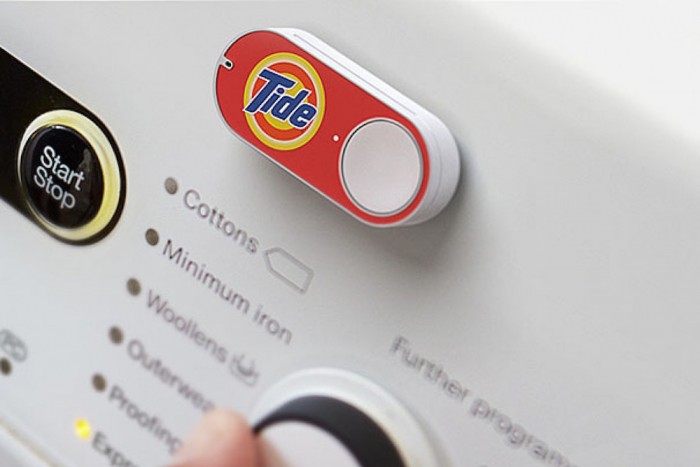
At first glance, Amazon Dash Buttons seem like a masterstroke of contextual commerce. Want to sell more laundry detergent? Get customers to put one on their washing machines. Dog running out of food? Slap a button above its bowl.
It sounds like a no-brainer for easy sales, but is it working?
Only if you consider “working” to mean that less than half of all consumers who’ve bought a Dash Button have ever actually made a purchase with it.
In all likelihood, Amazon Dash is just slogging through the mud that most products crawl through during their early-adopter phase, but the fact that so few people are finding the opportunities to purchase items via a product that was designed specifically to create those opportunities could be a red flag for other retailers trying to get their contextual commerce mojo moving.
But what if, instead of trying to seek out and exploit the moments in which customers are most likely to buy, retailers could let consumers define those windows for themselves?
That’s the aim of a new partnership between U.K. grocery and home goods retailer Tesco and IFTTT, a mobile app that allows users to program triggered actions through specific conditions. As IFTTT stands for “If This, Then That,” shoppers can combine a near-infinite number of actions to create personalized triggers that suit their individual shopping needs. Tesco recommends actions like “If it’s Thursday, add milk to my cart” and “If the weather looks good tomorrow, buy and deliver some hamburgers,” but the beauty of IFTTT means that anybody can upload what the app coincidentally calls “recipes” for use by anyone else.
The real potential game-changer, though, is that Tesco is letting shoppers exploit recipes like “If this product falls below this price, buy it then and there.”
That obviously implies a sophisticated level of integration between online databases and brick-and-mortar inventory, but the fact that the Tesco and IFTTT partnership lets consumers set the parameters by which they’re most likely to buy or when it’s most convenient for them to buy flips the whole dynamic of contextual commerce on its head. Instead of retailers throwing darts at a board or working off, at best, semi-accurate data, the Tesco-IFTTT venture takes most of the work out of the merchants’ hands altogether.
Is it the future of retail? Probably not at any reasonable scale. However, Angela Maurer, head of Tesco Labs, acknowledged that the modicum of technological competence required to set up an IFTTT recipe would be a barrier casual shoppers would never get over, and the potential data culled from the project could be invaluable.
“It will only appeal to a small number of customers, but by rolling this out, Tesco will learn a huge amount about their tech-savvy customers and be able to apply it to other customers,” Maurer told Retail Week.
Retailers are hardly starved of data about when and where their customers prefer to pull the trigger on a sale, but so few of those data sources come from information submitted directly from consumers. Even chatbots — the Facebook-annointed future of contextual commerce — are really just a fancy way of pushing the educated guesswork of when shoppers are at their most convertible from the desk of a human to the zeros and ones of an algorithm — and an often surly, uncanny valley-esque chatbot at that.
It’s decidedly within the realm of possibility that Amazon and other tech-fluent retailers could roll out similar programs that make use of consumer task management apps, especially as more consumers hop on board with them as a way to control and automate the ever-growing number of connected lightbulbs, thermostats and other at-home IoT devices.
And while it might never reach critical mass, the data that analysts can reap from the specific purchasing parameters consumers set by themselves is much more informative than knowing whether they do — or don’t — push the button on their Amazon Dash.